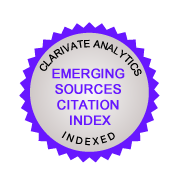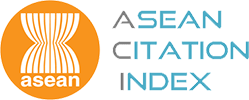ABDULLAH BADAWI’S FOREIGN POLICY TOWARDS CHINA: THREE-LEVEL ANALYSIS OF A PRAGMATIC AND IDEALISTIC DIPLOMACY STRATEGY IN A TWO-WAY COOPERATION
DOI:
https://doi.org/10.32890/jis2023.19.1.6Keywords:
Malaysia, China, foreign policy, bilateral cooperation, three level of analysis, diplomacy strategyAbstract
During his administration from 2003 to 2009, Abdullah Ahmad Badawi chose to continue the foreign policy of Mahathir Mohamad. However, he also applied a more ‘middle-ground’ approach that was neither provocative nor aggressive. This had on occasion portrayed him as a weak leader, contributing to the loss of majority seats for Barisan Nasional (BN) in the 12th general election. Nonetheless, during his tenure, there was an increase in cooperation between Malaysia and China in the educational and sociocultural fields, as well as cooperation with government-linked companies (GLCs), which had not happened before. How far did the moderate personality of Abdullah provide a significant impact on the structuring of Malaysia’s foreign policy towards China? This research will look at a three-level analysis that was conducted in assessing the foreign policy of Malaysia towards China during the period. The three levels that were analysed were international, national, and personality factors. A neoclassical realist approach was applied to look at the changing international political landscape and its impact on Malaysian foreign policy towards China. This research applied a qualitative method of obtaining primary data through structured interviews with key informants and an analytical method based on chronology—unsupported by empirical evidence from secondary data. In conclusion, the research revealed that Malaysia’s foreign policy towards China during Abdullah Badawi’s administration was a combination of ongoing maturing of relations and an increase in bilateral cooperation which had not been explored before. The research also found that although Abdullah Badawi was seen as a relatively weak leader in domestic politics, he made a significant impact on the continuity of Malaysia’s national interest, particularly in the soft power competition between the USA and China in Southeast Asia.
References
Abdullah, Ahmad Badawi. (2004). Multilateralism the Way Forward. Ucapan Perdana Menteri Malaysia pada 26 September. http://www.pmo.gov.my/ucapan/?m=p&p=paklah&id=2957.
Abdullah Badawi. (2005). Asia Pacific Roundtable di Kuala Lumpur. Ucapan Perdana Menteri Malaysia, 1 Jun. http://www.pmo.gov.my/ucapan/?m=p&p=paklah&id=2957.
Abdullah, Ahmad Badawi. (2005). The Official Luncheon in Honour of Chinese Premier Wen Jiabao. Ucapan Perdana Menteri Malaysia, 15 Disember. http://www.pmo.gov.my/ucapan/?m=p&p=paklah&id=2994.
Acharya, A. (2020). Four Factors that could shape Southeast Asia in the coming decade. Asia Pacific Bulletin. No 498.
Adnan Abu Bakar. (2013). Malaysia-US Relations: Influencing factors and its impact on Malaysia. Army War College Carlisle Barracks PA.
Alagappa, M. (2013). Developing a strategic relationship with China. The Edge Malaysia.
Alden, C & Vieira, M.A. (2005). The new diplomacy of the South: South Africa, Brazil, India and triletarism. Third World Quarterly, 26, 7, 1077-1095.
Anon. (2003). Abdullah found Chinese relatives after long search. The Star. 24 Disember.
Anon. (2007). China congratulates ASEAN on signing of Charter. Xinhua. November 20. http://english.sina.com/china/p/1/2007/1120/132885.html.
Anon. (2015). Envoy: China agains terrorism, discrimination and extremism. The Star. 25 September 2015.
Anon. 2016. Perdagangan Malaysia-China Cecah RM170.6 Bilion Antara Jan-Sept. Utusan Borneo Online. https://www.utusanborneo.com.my/2016/11/10/dagangan-malaysia-china-cecah-rm1706b-antara-jan-sept.
Anon. (2017). China Offered to bail out troubled Malaysian Fund in return for deals. Wall Street Journal, 7 Januari.https://www.wsj.com/articles/how-china-flexes-its-political-muscle-to-expand-power-overseas-11546890449.
Anon. (2019). BN hargai sokongan berterusan parti pemerintah China. UMNO ONLINE. 13 Jun 2019.https://umno-online.my/2019/06/13/bn-hargai-sokongan-berterusan-parti-pemerintah-china/.
Bahgaf, Korany. (1984). Foreign policy in the Third World: an introduction. International Political Sciences Review, 5, 1, 7-20.
Balakrishnan, K. S. (2006). Malaysia-China relations: The political challenges. ISC Working Paper, No. 2006-4. Kuala Lumpur: Institut Pengajian China, Universiti Malaya.
Balakrishnan, K. S. (2006). “The globalization impact on Malaysia-China political relations”. In Emile Kok Kheng Yeoh dan Hou Kok Chung (pnyt.). China and Malaysia in a globalizing world: Bilateral relations, regional imperatives and domestic challenges, hlm. 57-70. Kuala Lumpur: Institute of China Studies.
Brahma Chellaney. (2017). China’s Debt-Trap Diplomacy. Project Syndicate. 23 Januari. https://www.project-syndicate.org/commentary/china-one-belt-one-road-loans-debt-by-brahma-chellaney-2017-01?barrier=accesspaylog.
Chin, J. (2018). The comeback kid: Mahathir and the 2018 Malaysian General Elections. The Round Table, 107, 4, 535-537.
Chun Chien-peng. (2010). China’ s multilateral cooperation in Asia and the Pacific: Institutionalizing Bejing’s Good Neighbour Policy. New York: Routledge.
Emile Yeoh, Le Chang & Yemo Zhang. (2018). China-Malaysia Trade, Investment and Cooperation in the context of China-ASEAN integration and the 21st century Maritime Silk Road Construction. The Chinese Economy, 5, 4, 298-317.
Hu Jintao. (2007). President: China never seek hegemony. China daily.
Hyun-Wook Kim. (2011). Substantiating the cohesion of the post-cold war US-Japan alliance. Australian Journal of Internasional Affairs, 65,3, 340-359.
James Traub. (2006). The World Accodring To China. The New York Times. 3 September: 3.
Jin Zhesong & Li Jun. (2011). Foreign trade growth and economic development in China: Retrospective and future prospects. Honolulu. Enrich Professional Publishing.
Katayama, K. (2013). China’s rise and Japan’s Malaysia Policy. Kuala Lumpur: The University Malaysia Press.
Khadijah Khalid. (2013). “Malaysian foreign relations and diplomacy under Abdullah Badawi”. Dlm. Bridget Welsh & James U.H. Chin (pnyt.). Awakening: The Abdullah Badawi years in Malaysia, hlm. 527-550. Petaling Jaya: Strategic Information and Research Development Centre.
Khazanah Nasional. (2008). China: Perwilayahan dan mewujudkan perkongsian saling menang antara organisasi dan negara.
Kim, Cheol Jae. (2010). Politics of regionalism in East Asia: The case of the East Asia Summit. Asian Perspective, 34,3, 113-136.
Kuik Cheng Chwee. (2005). Multilateralism in China’s ASEAN policy: Its evolution, characteristic and aspiration. Contemporary Southeast Asia: A Journal of International and Strategic Affairs, 27,1, 102-122.
Kuik Cheng-Chwee. (2018). Malaysia’s Response to China’s Belt and Road Initiative:Interests, Authority, and Asymmetries. In Asymmetry and Authority: ASEAN States’Responses to China’s Belt and Road Initiative, Universiti Kebangsaan Malaysia-Queen Mary University of London Workshop, Kuala Lumpur, Malaysia, February 10–11, 2018.
Kuik Cheng Chwee. (2005). Multilateralism in China’s ASEAN policy: Its evolution, characteristic and aspiration. Contemporary Southeast Asia: A Journal of International and Strategic Affairs, 27, 1, 102-122.
Kuik Cheng Chwee. (2013). Making sense of Malaysia’s China policy: Asymmetry, proximity and elite’s domestic authority. The Chinese Journal of International Politics, 6, 429-647.
Kuik Cheng Chwee. (2016). Malaysia between the Unietd Staets and China: What do a weaker hedge against? Asian Politics & Policy 8, 1, 155-177.
Laporan Bank Negara (2008). https://www.bnm.gov.my/documents/20124/831132/cp03_002_rencana.pdf.
Laporan Bank Negara (2017). https://www.bnm.gov.my/index.php?ch=bm_publication&pg=bm_ar&ac=41&lang=bm.
Li Hui. (2019). China issues white paper on national defence in a new era. Xinhua. 24 July. http://www.xinhuanet.com/english/2019-07/24/c_138253508.htm.
Li Yiping. (2006). “Sino-Malaysian diplomacy in the Post-Cold War period: A regional analysis”. In: Emile Kok Kheng Yeoh dan Hou Kok Chung (pnyt.). China and Malaysia in a globalizing world: Bilateral relations, regional imperatives and domestic challenges, pages 45-56. Kuala Lumpur: Institute of China Studies, University of Malaya.
Lobell, S. E., Ripsman, N. M., & Taliaferro, J. W. (2009). Neoclassical realism, the state, and foreign policy. Cambridge University Press.
Menon, J. (2014). Growth without private investment: Happened in Malaysia and can it be fixed? Journal of the Asia Pacific Economy, 19, 2, 247-271.
Meenchee Hong, Sizhong Sun, Rabiul Beg & Zhangyue Zhou. (2020). Malaysia’s export to China: Does diplomatic relationship matter? A Journal of Applied Economics and Policy, 39,1, 72-88.
Muhammad Takiyuddin Ismail. (2014). Saga Neokonservatif: Abdullah Badawi UMNO dan Konservatisme. Bangi: Penerbit UKM.
Najib, Razak. (2009). Prime Minister’s address on assuming office as 6th Prime Minister of Malaysia. Ucapan Perdana Menteri Malaysia, 3 April. http://www.pmo.gov.my/ucapan/?m=p&p=najib&id=3907.
Ngeow Chow Bing. (2019). Malaysia’s China policy and the South China Sea Dispute under the Najib administration (2009-2018): A domestic process approach. Asian Politics & Policy, 11, 4, 587-605.
Ngeow Chow Bing & Tan Chee Beng. (2018). Cultural ties and states’ interests: Malaysian Chinese and China’s rise. New York: Routledge.
Ngeow Chow Bing. (2015). Comprehensive strategic partners but prosaic military ties: The development of Malaysia-China defence relations 1991-2015. Contemporary Southeast Asia, 37, 2, 269-304.
Ngeow Chow Bing. (2017). Barisan Nasional and the Chinese Communist Party: A case study in China’s Party-Based Diplomacy. The China Review, 17, 1, 53-82.
Nordin, Astrid & Mikael Weissmann. (2018). Will Trump make China great again? The belt and road initiative and international order. International Affair, 94, 2, 1-19.
Norhayati Mohd Salleh. (2008). Pilihan Raya Umum ke 12 (PRU-12): Tsunami politik Melayu? JEBAT, 35(49): 64-69.
Paul Hong & Young Won Park. (2020). Rising Asia and American Hegemony: Case of competitive firms from Japan, Korea, China and India. Singapore: Springer.
Ripsman, N., Taliaferro & J., Lobell. Steven. (2016). Neoclassical realist theory of international politics. Amerika Syarikat: Oxford University Press.
Rose. G. (1998). Neoclassical realism and theories of foreign Policy. World Politics. 51(1), 75-115.
Samuel Kim. (2004). Northeast Asia in the local-regional-global nexus: Multiple challenges and contending explanations. Dlm Samuel Kim (pnyt.). The International Relations of Northeast Asia, hlm. 8. Lanham: Rowan and Littlefield.
Smith. N.R. (2019). A new Cold War? Assessing the current US-Russia Relationship. Switzerland, page 46.
Smith, Paul. (2004). Terrorism and violence in Southeast Asia: Transnational challenges to states and regional stability. ME Sharpe.
Sodhy, Pamela. (2012). Malaysia-US relations: Malaysia’s foreign poicy, continuity & change. Shah Alam: Marshall Cavendish Sdn Bhd.
Suruhanjaya Pencegahan Rasuah Malaysia. (2019). Penjelasan Mengenai Isu Dana RM 2.6 bilion dan Siasatan SRC International. https://www.sprm.gov.my/arkib-kenyataan-media/449-penjelasan-mengenai-isu-dana-rm2-6-bilion-dan-siasatan-src-international.
White House. (2015). National Security Strategy of the United States of America. Washington DC.
Yi, Xiaoxiong. (2005). Chinese foreign policy in transition: Understanding China’s peaceful development. The Journal of East Asian Affairs, 19, 1, 74 – 112.























